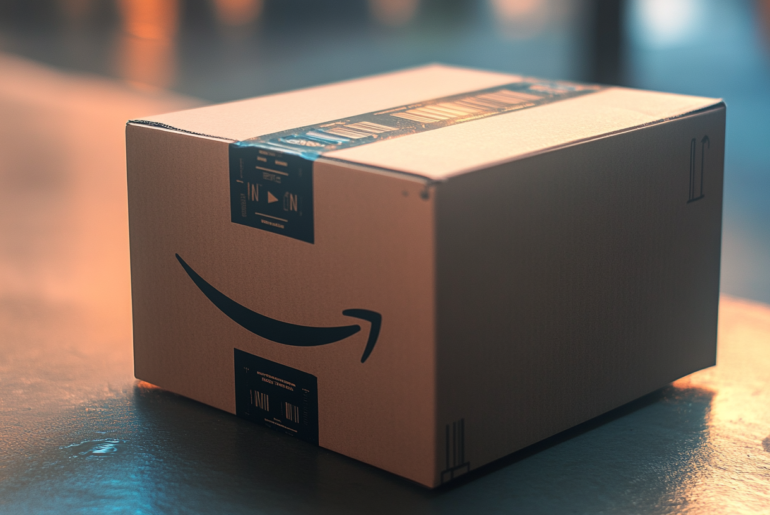This article may contain references to products or services from one or more of our advertisers or partners. We may receive compensation when you click on links to those products or services. Nonetheless, our opinions are our own.
The information presented in this article is accurate to the best of our knowledge at the time of publication. However, information is subject to change, and no guarantees are made about the continued accuracy or completeness of this content after its publication date.
Amazon’s “Buy Together” feature promises to make purchasing bundled items easier by allowing you to purchase related items in groups at a lower price. These bundles can be helpful and help you save money, but not every deal is as good as it looks. We’ll discuss how Amazon’s “Buy Together” bundles work, how to determine if you’re saving money, and how to avoid falling for marketing tricks. It will help you shop smarter and save the most money.
- What Are Amazon’s “Buy Together” Bundles
- The Basics of “Buy Together” Deals
- How “Buy Together” Bundles Benefit Shoppers and Sellers
- What You Need to Know
- Identifying Quality Bundles vs. Marketing Gimmicks
- Tools and Resources for Evaluating Bundle Deals
- A Guide for Newbies to Get the Best from Amazon Bundles
- Conclusion
- Frequently Asked Questions
- Recommended Reads
What Are Amazon’s “Buy Together” Bundles
Amazon’s “Buy Together” bundles are groups of related items that are sold together at a lower price. These bundles can help you save money by offering items that complement each other, such as a phone case and a screen protector, or a coffee maker and coffee filters. The goal is to help you shop by suggesting things that go well together. But not every “Buy Together” deal is a good deal. Some bundles may not be worth it because they only offer a small discount or include items you don’t need. If you understand how these bundles work and how to determine their true value, you can avoid purchasing items you don’t need and make more informed choices.
The Basics of “Buy Together” Deals
A “Buy Together” deal combines items that complement each other and sells them for less than if you bought them separately. These bundles can make shopping easier by suggesting items that complement each other, such as laundry detergent and fabric softener. But the discount isn’t always that big. Before purchasing a bundle deal, check to see if the items are worth it and if you genuinely need them. Some bundles are truly worth it, but others may be merely ways to encourage people to buy items that wouldn’t sell otherwise.
How “Buy Together” Bundles Benefit Shoppers and Sellers
The best thing about “Buy Together” bundles for shoppers is that they can save money by purchasing items that complement each other. They also make shopping easier by giving you a list of valuable items to choose from. However, you need to ensure that all the items in the bundle are helpful to you. For sellers, bundling products helps them attract more customers and increase sales. They can create a sense of value for customers by putting popular items together with less popular ones in bundles. Additionally, it’s a great way to encourage people to purchase more than they initially planned or to introduce new products. The “Buy Together” feature also works with Amazon’s “Subscribe & Save” program. Customers can set up regular deliveries of bundled items at a lower price, making things easier for them and encouraging them to return to the seller.
What You Need to Know
It’s easy to get swept up in the allure of a discounted bundle, but it’s essential to pause and ask yourself: Do I need all the items in this bundle? While the deal may sound great, you might end up with products you don’t need, wasting your money.
To assess whether a bundle is worth it, here are some tips:
Voted "Best Overall Budgeting App" by Forbes and WSJ
Monarch Money helps you budget, track spending, set goals, and plan your financial future—all in one app.
Get 50% OFF your first year with code MONARCHVIP
Identifying Quality Bundles vs. Marketing Gimmicks
A well-structured bundle comprises products that complement each other and provide genuine savings. For instance, combining a coffee maker with filters is a sensible choice. But some bundles may group unrelated items to create the illusion of a good deal.
Important considerations include:
- Price Comparison: Always compare the bundle price with the cost of buying the items individually. If the discount isn’t substantial, it may not be worthwhile.
- Necessity: Do you need every item in the bundle? Avoid purchasing unnecessary items, even if the overall price seems attractive.
- Product Reviews: Read customer reviews to ensure the items are of good quality. If multiple products in the bundle have poor reviews, the bundle may not be worth purchasing.
Tools and Resources for Evaluating Bundle Deals
Several tools can help you assess whether Amazon’s “Buy Together” bundles are a good deal. These include:
| Tool/Resource | Description |
|---|---|
| Frequently Bought Together | Displays commonly paired items, helping assess bundle relevance. |
| Browser Extensions | Track price history, set alerts, and compare prices across sellers. |
| Amazon Brand Analytics | Provides insights into product bundling trends and complementary purchases. |
Using these tools can provide a clearer picture of whether a bundle is a good value, helping you make smarter shopping decisions.
A Guide for Newbies to Get the Best from Amazon Bundles
To maximize the benefits of Amazon bundles, it’s essential to be strategic in your approach. Use the following guide to evaluate bundle deals and determine if they align with your needs and budget:
1. Research and Compare Bundle Offers:
- Check individual product prices and compare them to the bundle cost.
- Don’t forget to factor in shipping costs when comparing prices across different sellers.
2. Check Reviews and Ratings for Bundle Items:
- Customer reviews can provide valuable insights into the quality and value of the products in the bundle.
- Avoid bundles that contain items with low ratings, even if the price seems attractive.
3. Calculate the Savings of a Bundle Deal:
- Add the prices of the individual products and compare the total to the bundle price.
- Look for any additional discounts or coupons that may apply to single-item purchases.
4. Consider how easy it is to use the items included in the bundle:
- Ensure that all the items in the bundle are valuable and fit your needs.
- Avoid bundles with items you won’t use or need to store for long periods.
5. Finalize a purchase decision based on value:
- Consider return policies and shipping costs.
- Focus on the value and necessity of the bundle rather than just the price.
Conclusion
When you choose wisely, Amazon’s “Buy Together” bundles can save you money and make things easier. You can avoid getting tricked by ads and make better buying decisions by comparing prices, reading reviews, and thinking about what you need. To ensure that bundles are worth the money, utilize the provided tools and tips. This will help you make better purchases and have a better shopping experience.
Frequently Asked Questions
Are “Buy Together” deals on Amazon always a good value?
Not always. Some bundles offer genuine savings, while others don’t. Always compare the bundle price to the cost of buying the items individually and check for available coupons.
How can I identify if a bundle deal is worth it?
A good bundle contains items that complement each other and offer a meaningful discount. Compare the prices, read reviews, and ensure the items are helpful to you.
Can I return a part of a bundle if I’m not happy?
Amazon’s return policy differs by product. Some bundles may require you to return all items together, while others may allow partial returns. Check the return policies for each bundle before making a purchase.
How can I find the best Amazon bundles?
Use Amazon’s “Frequently Bought Together” feature, compare prices across sellers, and use browser extensions like Honey to track price history and discounts.

Reviewed and edited by Albert Fang.
See a typo or want to suggest an edit/revision to the content? Use the contact us form to provide feedback.
At FangWallet, we value editorial integrity and open collaboration in curating quality content for readers to enjoy. Much appreciated for the assist.
Did you like our article and find it insightful? We encourage sharing the article link with family and friends to benefit as well - better yet, sharing on social media. Thank you for the support! 🍉
Article Title: Is Amazon’s “Buy Together” Bundle Really a Good Deal?
https://fangwallet.com/2025/08/02/is-amazons-buy-together-bundle-really-a-good-deal/The FangWallet Promise
FangWallet is an editorially independent resource - founded on breaking down challenging financial concepts for anyone to understand since 2014. While we adhere to editorial integrity, note that this post may contain references to products from our partners.
The FangWallet promise is always to have your best interest in mind and be transparent and honest about the financial picture.
Become an Insider

Subscribe to get a free daily budget planner printable to help get your money on track!
Make passive money the right way. No spam.
Editorial Disclaimer: The editorial content on this page is not provided by any of the companies mentioned. The opinions expressed here are the author's alone.
The content of this website is for informational purposes only and does not represent investment advice, or an offer or solicitation to buy or sell any security, investment, or product. Investors are encouraged to do their own due diligence, and, if necessary, consult professional advising before making any investment decisions. Investing involves a high degree of risk, and financial losses may occur including the potential loss of principal.
Source Citation References:
+ Inspo
Kauffman, R. J., & Wang, B. (2002). Bid together, buy together: On the efficacy of group-buying business models in Internet-based selling. Handbook of electronic commerce in business and society, 99-137.












































